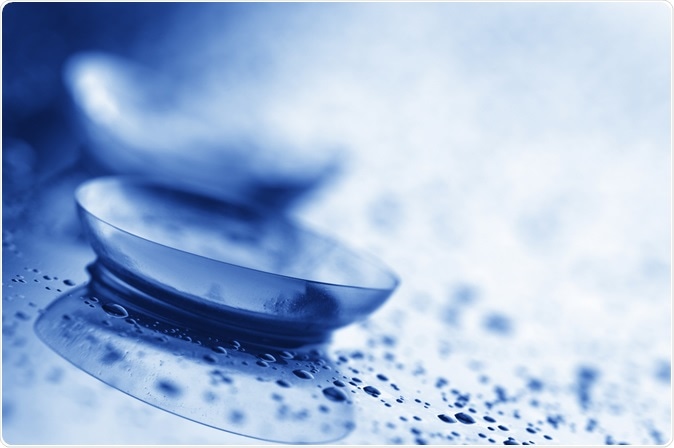Nearly 45 million Americans use soft disposable contact lenses and after use flush them down the toilet. Researchers at the Arizona State University have requested people not to do so because the flushed out contact lenses could be having a severe impact on the environment.

Image Credit: Svetlana Lukienko / Shutterstock
According to the team of researchers, up to 20 percent of contact lens users flush them down the toilet after use. This amounts to up to 3.36 billion lenses annually and around 50,000 pounds of plastic. This form of plastic does not dissolve when they reach the waste water treatment plants, they explain. Instead the plastics are broken down into microplastics that end up in the soil. Researcher Rolf Halden, director of ASU's Biodesign Institute Center for Environmental Health Engineering, explained that the lenses that end up in the sludge are back into surface water and the soil. The team presented their findings at the 256th National Meeting and Exposition of the American Chemical Society in Boston, this Sunday.
The team stated that around 6 to 10 metric tonnes of plastic lenses ended up in wastewater a year. The microplastics that are formed when this waste water is treated ends up in the water ways and finally into the food chain they explain. Study co-author and Arizona State University graduate student Charles Rolsky said that their study was initially begun as an “exploratory venture” but then they noticed evidence of “fragmentation of contact lenses into microplastics” in a waste water treatment plant. This is the first study that shows the movement of contact lenses through waste water and back into the surface water.
For this study the team looked at 139 contact lens users to determine how they disposed of their lenses. Some of the users wore once-a-month-replaceable lenses while other wore daily-replaceable lenses. Overall 19 percent were found to be flushing down their lenses down the toilet or sink.
In the second and third stages of the study the team looked at the form of plastics used in these lenses and found that they are made of soft plastics like poly(methylmethacrylate), silicones, and fluoropolymers. When these soft plastics mix with the microbes present in waste water they break down, the team noted.
The break down keeps occurring until the plastics are broken into microplastics. These microplastics cannot be filtered out of the waste water unlike larger plastic particles. Since they escape the filters, they end up back in nature via the waterworks. These microplastic particles are heavy and thus sink in the water bodies. They are then consumed by the bottom feeders from where they end up back in the human food chain.
Halden assures contact lens users that they should not stop wearing lenses because of this study. According to the researchers, there is only one way that this can be curbed. This includes proper disposal of the lenses. They advise users to put the lenses in solid trash rather than attempt to flush it. They noted that 11 brands of soft contact lenses did not advise their users about proper disposal of the lenses.
Only Bausch + Lomb, one of the main makers of contact lenses was trying to find ways to effectively recycle and reuse old lenses. They have a recycling program where users can participate in two ways. They can use the lenses and put them back in the packages and deposit them back at the doctor’s offices so that these can be picked up by the company for recycling. They can also download a pre-printed label and ship the boxes with the used lenses in them, back to the makers.
Reference: https://plan.core-apps.com/acsboston18/abstract/28f9ab41-837f-46ef-8655-feb59aa75cb3